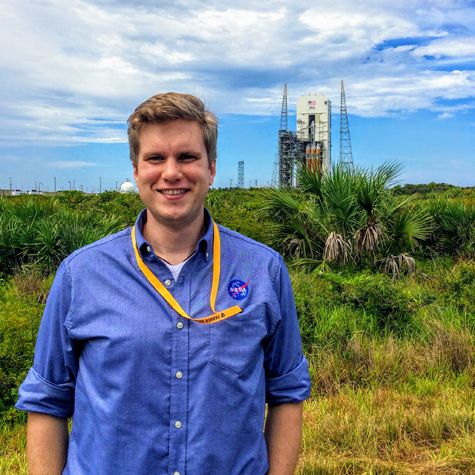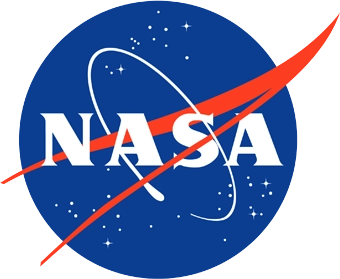Early Career Scientist Spotlight
Dr. Michael Kirk
Solar Physicist
Solar Physics Laboratory
What is your research focus?
I work to better understand the sun’s ever-changing outer atmosphere by analyzing extreme ultraviolet images of the solar corona taken from satellites in orbit. These high-resolution, complex images reveal plasma at temperatures from tens of thousands to tens of millions of degrees that is being commanded by powerful magnetic fields emerging from the solar interior. Using machine learning (ML) and artificial intelligence (AI), my research focuses on discovering something new from this massive amount of data.
I typically have several different research projects going at any one time, but the most lasting project involves measuring polar coronal holes. These areas on the north and south poles of the sun define a region in which the magnetic fields generated inside the sun are allowed to open to the solar system. These regions are difficult to see, since we have never had a spacecraft image the solar poles directly, so it takes a large number of images working together to map these regions. It is like trying to map Antarctica, but you’re only able to do so by looking at the equator – except coronal holes are constantly changing their shape.
In solar physics, we have petabytes of images of the sun, which is ideal for using machine learning techniques for identifying and tracking changes. However, solar physics lacks any ground truth for what those images show. This means that if you asked 10 solar physics experts to draw a line around a coronal hole, you will get 10 different answers, unlike on the earth where we can generally agree where objects begin and end. This represents a significant challenge but, in collaboration with colleagues and industry, we continue to make headway.
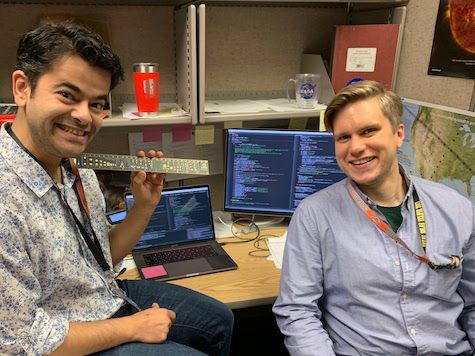
Credit: Michael Kirk
Did you always know that you wanted to be a solar physicist?
I have always liked the sky, space, and astronomy, but really didn’t think much about the sun. I remember meeting the father of my undergraduate roommate, who was a solar physicist at Stanford, the first day moving into the dorms and thinking “gosh his job sounds boring.” It was only after graduating with my B.A. and beginning to work at NASA Goddard that I even considered solar physics as a career.
Interestingly, at my first professional conference, I ran into the father of my roommate. He was shocked that I was there but, since then, we’ve enjoyed catching up with each other at solar conferences we both attend.
How did you end up working at NASA Goddard?
It’s a bit of a long story, but an interesting one… (TLDR: I’m not sure how I ended up at NASA.)
After graduating with my bachelor’s degree in 2006, I really didn’t know what I wanted to do with my life. Taking the GRE and continuing to graduate school didn’t really appeal to me. So, I moved home with my parents. That following summer was great – I traveled around Mexico for a few weeks, hung out with my best friend before he was married, and had a feeling that anything was possible in the world. Unfortunately, once September arrived, my sunny outlook ended. I picked up work where I could, landscaping, catering, etc., with the ideal of finding an exciting career in the meantime. However, by the winter, I started applying for any job that I might qualify for with a B.A. in physics and asking everyone and anyone to pass along my resume: undergraduate professors, classmates, friends of my parents. I even started cold-emailing people who I admired to set up informational interviews. I had a memorable phone call with Dr. John Mather just a few weeks after he won the Nobel Prize in Physics, and he told me to continue pursuing a career in science even if it looked difficult where I was.
Once February arrived, I had enough of living at home and decided to drive across the country from Oregon to Washington, DC, to visit my girlfriend. Two weeks later, I was in Maryville, TN, a day’s drive from DC, when I got a call from Adnet Systems at NASA Goddard asking if I would like to interview for a position. I was absolutely stunned. I had never applied for that job. I didn’t even know it existed. I have a guess how my resume ended up at Goddard, but to this day, I have never confirmed it. A few days later, on my birthday, I interviewed with Dr. Dean Pesnell for a position in the solar physics laboratory and, a couple of weeks later, I was hired as a Systems Engineer working with Dean to study polar coronal holes.
I stayed in that position for about a year and a half before Dean eventually told me that I needed to go to grad school if I wanted a career as a scientist. Grudgingly (and painfully), I took the GREs and was accepted into the Astronomy Department at New Mexico State University in 2008. After receiving my PhD, I returned again to the Heliophysics Science Division as a NASA Postdoctoral Fellow in 2013 and have remained in the same office since.
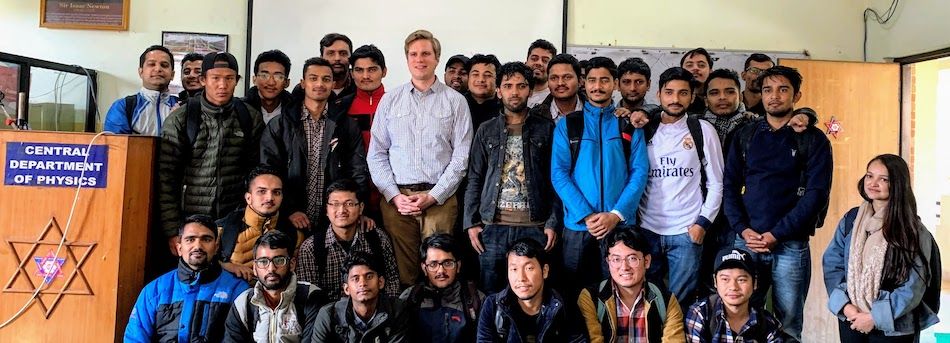
Credit: Michael Kirk
Tell us about one project that has been particularly impactful in your field.
We are developing a new research group called the Center for HelioAnalytics within NASA’s Heliophysics Science Division. The Center for HelioAnalytics brings together science and data science to increase the scientific yield of existing and future heliophysics data and to enable researchers to use advanced analytical techniques such as machine learning in their investigations. This convergence of scientific questions and data science techniques has been at the heart of all of my research going back to my first days at Goddard. As Acting Director, I have the privilege of leading efforts to build a community of practice. We recently received internal funding to further the community and sponsor some pilot projects. I am still chasing the dream of using machine learning to make a scientific discovery that wouldn’t have been possible any other way.
What is one of your favorite moments in your career so far?
I will never forget the 2017 eclipse and the opportunity I was given to help bring NASA out of the textbooks and into people’s lives. In the days, weeks, and months leading up to the total solar eclipse, I led immersive outreach in north-central Oregon that engaged over 9,000 community members from Warm Springs Reservation, Madras, and beyond. Dr. Dean Pesnell and I traveled to Madras and Warm Springs twice during the school year before the eclipse and we talked with every class in the entire school district, from kindergarten through grade 12, over 3,000 students, about the sun and eclipses. Then, the week of the eclipse, we set up a NASA pavilion on the county fairgrounds in Madras and talked face-to-face with over 6,000 more people from the general public, with the help of a tenacious group of volunteers that included colleagues, friends, and family. The wait was consistently between 1-1.5 hours just to get in the door to interact with a NASA scientist.
Dean and I traveled again to Madras and Warm Springs in the following school year. We connected with middle and high school students to cement the lessons of the eclipse and encourage them to continue with STEM in college.
For the community members we interacted with, NASA scientists were no longer some faceless guys in lab coats, but became real people they could ask questions to and get excited with. Future scientists and engineers will look back on this eclipse event as the pivotal moment they knew what they wanted to be when they grew up.
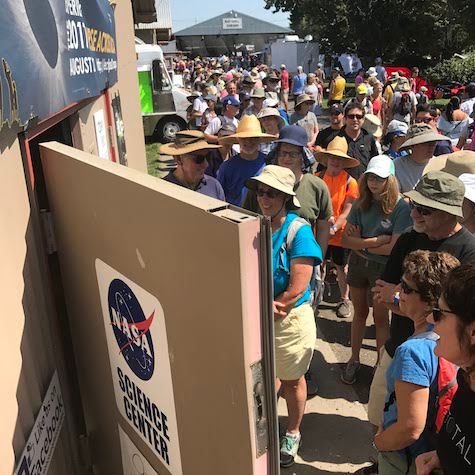
Credit: Michael Kirk
What do you enjoy the most about your job?
I most enjoy talking with people about my work – people at all levels of subject knowledge. I really get excited to sit around a whiteboard with my colleagues and develop a new idea or solve a programming challenge. I love being able to talk to classrooms of young students and tell them about how the sun works or talk to an administrator or member of Congress about how the research we are doing now will impact their lives in the future. Taking incredibly complex questions or ideas and breaking them down into bite-sized pieces that anyone can understand is my favorite part about being a professional scientist.
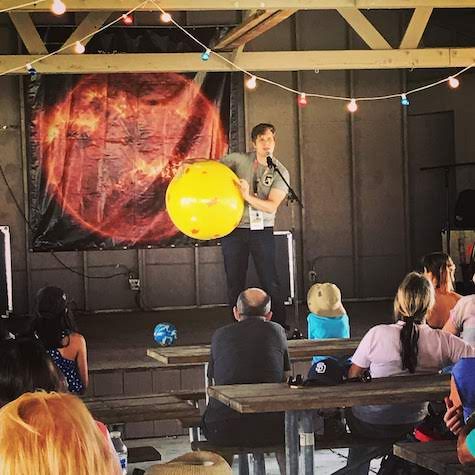
Credit: Michael Kirk
What early career advice do you have for those looking to do what you do?
Listen and be kind. There is so much about your career that you can’t control. I have failed many more times than I have succeeded, but I am clear that I wouldn’t be where I am today if it weren’t for the support from people around me. Every step of the way, I have had help. Sometimes, I don’t even know where that help came from. If you listen to people and are kind, people will remember you for it – even if it doesn’t seem like it in the moment.
Biography
Home Town:
McMinnville, OR
Undergraduate Degree:
B.A. in Physics and Astronomy, Whitman College, Walla Walla, WA
Post-graduate Degrees:
Ph.D. in Astronomy, New Mexico State University, Las Cruces, NM
